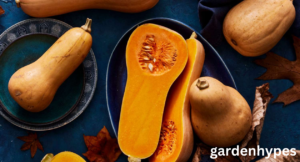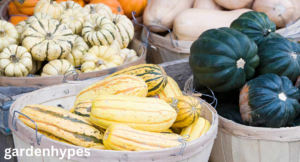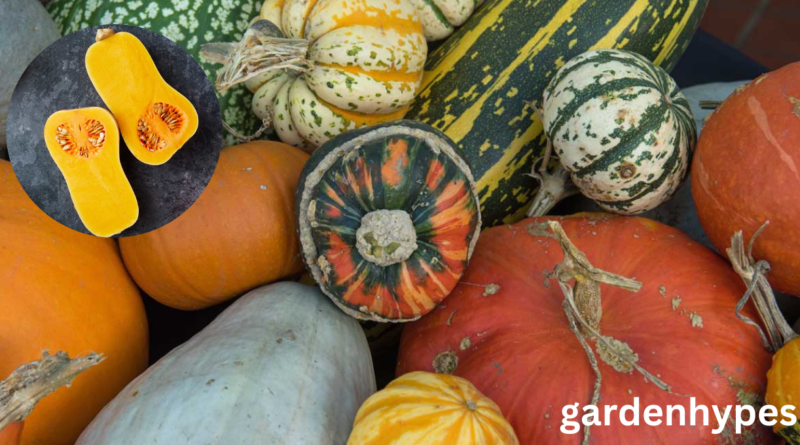Winter Squash Varieties A Guide to Flavor & Uses
Introduction to Winter Squash
When the weather turns cold, nothing feels cozier than a bowl of roasted squash or a creamy squash soup. Winter squash Varieties is a staple of autumn and winter kitchens, loved for its hearty texture, sweet and nutty flavors, and impressive nutritional value. Unlike summer squash, which has a tender skin and is eaten fresh, winter squash develops a hard rind that allows it to be stored for months—making it a reliable food during the colder seasons.
click in link watermelon mocktail
What Makes Winter Squash Unique
Winter squash comes in many shapes, sizes, and colors—from the smooth beige of butternut squash to the bright green stripes of delicata. Its defining feature is the thick, hard rind that protects the flesh inside. This makes it suitable for long storage, often lasting into late winter if kept in a cool, dark place. Unlike summer squash, which is often harvested young, winter squash is left to fully mature on the vine, which gives it a richer flavor and denser texture.
Nutritional Value and Benefits
Winter squash is more than just comfort food—it’s a nutritional powerhouse. It is rich in vitamins A and C, both essential for immune support, skin health, and vision. Many varieties are also high in fiber, which aids digestion and helps you feel full for longer. The natural sweetness of squash makes it a healthier alternative to processed sugars in baking, while its starchy texture makes it a perfect stand-in for potatoes or pasta in savory dishes. Eating winter squash regularly provides antioxidants that help fight inflammation, while its potassium content supports heart health.
Popular Winter Squash Varieties
Butternut Squash
Butternut squash is perhaps the most popular and widely recognized variety. With its bell shape and pale tan skin, it’s easy to identify. The flesh is bright orange, smooth, and sweet, making it one of the most versatile squash types in the kitchen. It roasts beautifully, purees into silky soups, and can even be used in baked goods like muffins or bread. Its natural sweetness pairs well with warm spices like cinnamon and nutmeg, while also balancing savory flavors like garlic, sage, and thyme.
Nutritionally, butternut squash is packed with beta-carotene, which the body converts into vitamin A. This makes it excellent for supporting eye health and boosting immunity. Gardeners love it too because it stores well—lasting up to three months in the right conditions.
click in link watermelon mocktail

Acorn Squash
Acorn squash is small, round, and ribbed, often deep green with a splash of orange near the top. Its name comes from its resemblance to a giant acorn. The flesh is slightly less sweet than butternut, with a mild, nutty flavor that works beautifully in savory dishes. Many people cut it in half, scoop out the seeds, and roast it in the oven with butter, maple syrup, or herbs for a simple side dish.
One unique feature of acorn squash is its edible skin. While not everyone enjoys the texture, roasting softens the rind enough to eat alongside the flesh. In terms of nutrition, acorn squash is high in fiber and vitamin C, making it a filling and nourishing addition to fall meals.
Spaghetti Squash
Spaghetti squash is one of the most fascinating varieties because of its unique texture. When cooked, the flesh separates into strands that resemble spaghetti noodles, making it a popular low-carb substitute for pasta. Its mild, slightly nutty flavor allows it to take on the taste of whatever sauce or seasoning it’s paired with—whether that’s marinara, pesto, or garlic butter.
click in link watermelon mocktail
This squash is usually oval-shaped with a yellow rind. It’s relatively low in calories but rich in vitamin C, potassium, and fiber. For anyone looking to lighten up their meals without sacrificing comfort food, spaghetti squash is a must-try.
faqs

1. Which winter squash is the sweetest?
Among all winter squash, kabocha and butternut squash are often considered the sweetest. Kabocha has a rich, chestnut-like sweetness, while butternut has a smooth, honeyed flavor that makes it perfect for soups and roasting. If you enjoy squash that leans toward dessert-like sweetness, these are your best picks.
2. Can you eat squash skin?
Yes, but it depends on the variety. Squash with thinner skins, such as delicata and acorn squash, have edible rinds when roasted. Varieties like butternut or hubbard have much tougher skins that are usually peeled before cooking. Always wash squash thoroughly before preparing, since the skin can hold dirt or wax coatings.
3. What’s the best squash for soup?
Hands down, butternut squash is the most popular choice for soup. Its smooth texture and natural sweetness blend into a creamy, velvety base without needing heavy cream. Kabocha is another excellent choice for soup lovers—it creates a richer, slightly nutty flavor.
4. How long can you store winter squash?
When stored in a cool, dark, and dry place, most winter squash lasts 1 to 3 months. Some varieties like hubbard or butternut can last even longer—sometimes up to 6 months. Just make sure to keep them whole, uncut, and away from moisture. Once cut, store squash in the refrigerator and use within a few days.
5. Is pumpkin a winter squash?
Yes! Pumpkins fall under the winter squash family. They share the same hard rind and dense, sweet flesh typical of winter squash. While often used in pies and holiday recipes, pumpkin is just as versatile as other varieties—you can roast it, puree it, or even cube it for stews.
